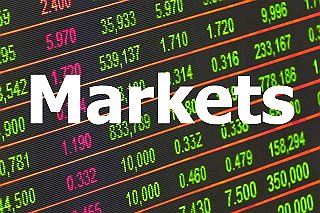Weekly Market Review & Analysis For August 23, 2021

S&P 500 market with +1.5% and Nasdaq Composite at +2.8% both set new records this week. This demonstrates the bull market's ability to ignore concerns and still attract buyers. After Friday's Jackson Hole speech by Fed Chair Powell, both ended the week up 1.5% and 2.8%, respectively.
The Dow Jones Industrial Average fell relative to the Russell 2000, which saw a 5.1% increase. This was due to a strong rebound in energy stocks.
Sector-wise, the S&P 500 Energy sector saw a 7.3% rebound (reducing its monthly decline to 1.0%), while five other sectors experienced a more than 2.0% increase. Defensive-oriented utilities (-2.1%), consumer staples (-1.4%), health care (-1.2%) and real estate (-0.3%) closed lower, loosely reflecting a higher market tolerance for riskier stocks.
The market lineup
The market was aligned with a buy-the-dip mindset before Powell's speech.
- An observation about how last week's market ended on high notes.
- Data suggests that the Delta variant may be peaking in America.
- The FDA has granted full approval for the Pfizer-BioNTech vaccine (BNTX) for people aged 16 and over.
- The House advances the $3.5 trillion budget resolution through procedural hurdles and the $1 trillion bipartisan Infrastructure bill.
- Earnings reports are, for the most part, still exceeding expectations.
- Taiwan Semi plans to raise prices for more advanced chips by 10%-20% in the next year.
- Preliminary manufacturing/service PMIs for August from the eurozone and U.S. still in expansion mode.
- Reports indicate that Treasury Secretary Yellen and White House advisors agree with Powell's nomination for a second term as Fed Chair.
Despite all the positive news, the S&P 500 only rose 0.6% on Friday. This was partly due to the geopolitical uncertainties in Afghanistan, Fed commentary that is hawkish and a desire to taper sooner than expected, and some hesitation in front of Powell's speech.
Friday's hawkish comments continued, but Fed Chair Powell maintained a calm tone that appeased markets. In short, Powell stated that there has been "substantial progress" in inflation and that employment has improved. This suggests that it is not the right time for the Fed to stop buying assets. The U.S labor market yet has room for improvement.
The Fed chair admitted that tapering should begin before the year ends. However, he reminded market participants that financial conditions would remain accommodative even after the central bank stops buying. He also said that the criteria for interest rate hikes would be determined based on a more thorough assessment of the economy.
The comments caused a dip in U.S. Treasury yields. After hitting 1.37% earlier this week, the Ten-year yield settled five basis points higher at 1.31%. The U.S. Dollar Index dropped 0.9% to 92.68.
Overseas market
Although the Chinese economy is now pre-pandemic, higher costs, supply bottlenecks, and record rainfall have caused flooding in some areas. New COVID outbreaks which lead to new restrictions, raise concerns that China's second-largest economy could see a slowdown in the third quarter.
The Chinese retail sales market increased 8.5% in July, lower than the +11.2% forecast and the +12.1% actual for the previous month. The continuous regulatory crackdowns are eroding investor confidence against Chinese businesses, especially tech companies.
Unexpectedly, British retail sales fell by 2.5% in July compared to June. According to the National Statistics Office, lousy weather, the resurgence in Covid, and the Soccer team's march towards the Euro 2020 finals are the main reasons shoppers stayed at home.
Cryptocurrencies
After a three-month gap, Bitcoin prices reached a $50,505 high on Monday, August 23. The lead crypto-asset quietly and steadily emerged to reach our Inner Coin Rally at $50,130. This coincided with a significant $50,000 Maginot line, all projected on Weekly Daily Chart Analysis for August 9, 2021.
Coinbase Global, a cryptocurrency exchange that provides technology and financial infrastructure for the crypto economy, announced late last week that it would buy $500 million in crypto and invest future profits into a crypto portfolio.
These seven days have had a significant impact on Bitcoin and Altcoins market. The seven-day return of Bitcoin was 7.97%. However, other top-ranked coins such as Cardano (ADA), Binance Coin (BNB), Solana (16.42%), and Polkadot(DOT) saw significant gains.
Will the price surge be an inflection point that allows Bitcoin to gain broader acceptance in the financial mainstream and move towards the next Inner Coin Rally $54,550? Stay tuned.